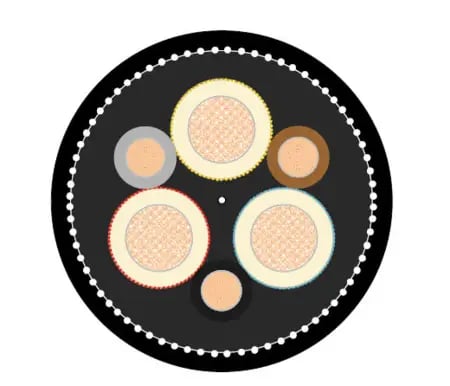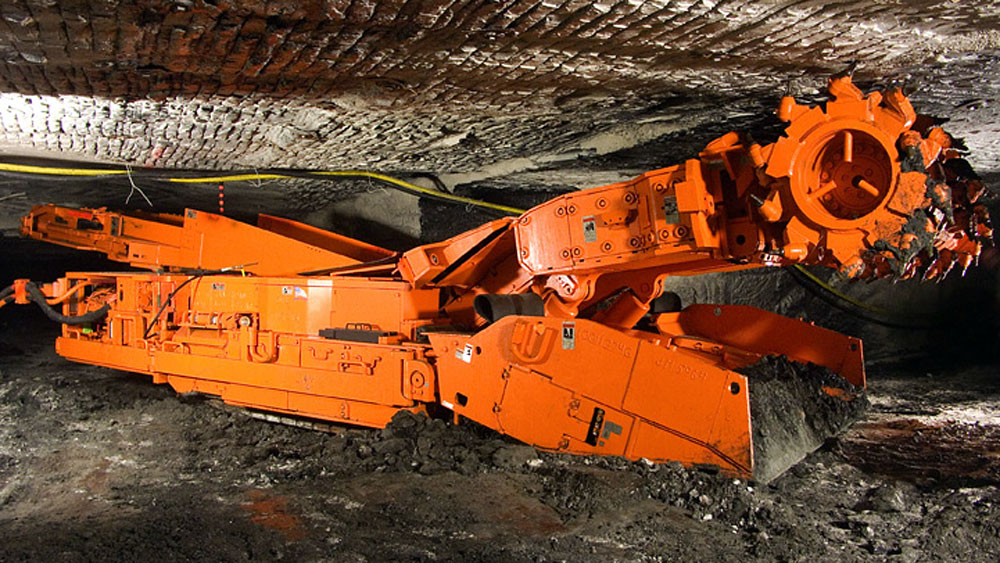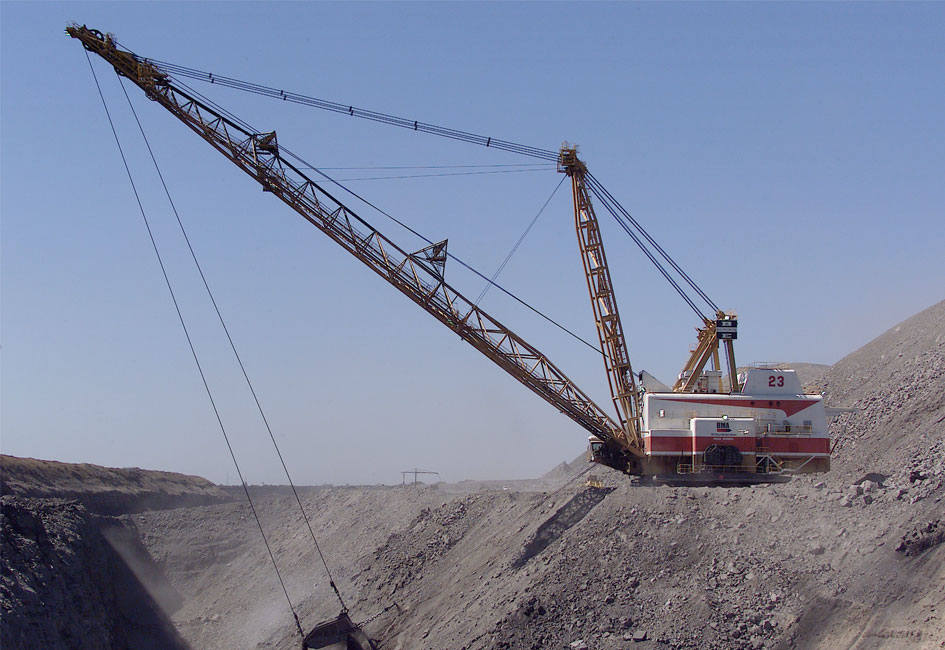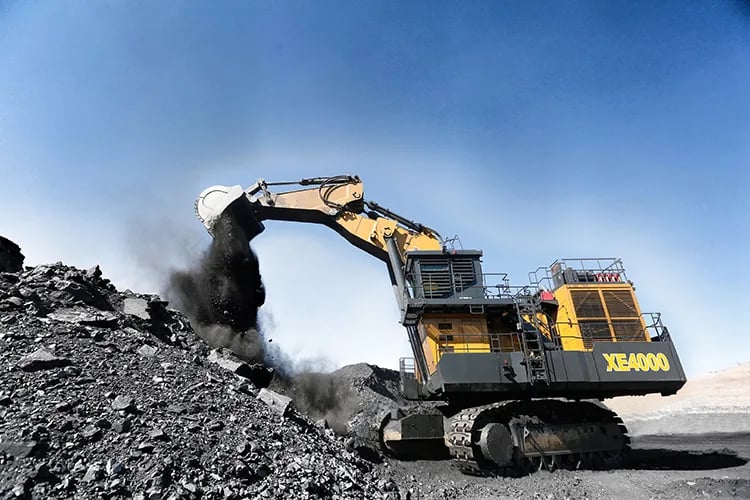Anhui Feichun Special Cable Co.,Ltd Li.wang@feichuncables.com
Why Is Type 61A Mining Cable the Unsung Hero Keeping South Africa's Mining Operations Safe and Profitable in 2025?
Discover how Type 61A mining trailing cables ensure safety and reliability in South African mines. Learn about SANS 1520-1 compliance, flexible cable construction, and why this durable mining cable is essential for underground operations from the Witwatersrand to Limpopo's platinum belt.
Li.wang@Feichun Cable
7/25/202511 min read


Introduction: Why Cable Choice Matters in Mining
When you flip a light switch in Johannesburg or Cape Town, you're connected to a complex chain that often begins deep underground in South Africa's mines. But between the mining equipment extracting precious metals and the power that drives it lies a critical component that most people never see: the mining trailing cable. In South Africa's R500 billion mining industry, these cables are literally the lifelines that keep operations running safely and profitably.
The choice of mining cable isn't just about delivering power—it's about preventing catastrophic failures that can cost lives, halt production, and result in millions of rands in losses. In the harsh environments of South African mines, from the gold reefs of the Witwatersrand to the platinum deposits of the Bushveld Complex, cables face extreme challenges: rock falls, chemical exposure, constant movement, and temperatures that can swing from scorching surface heat to the controlled environments deep underground.
This is where Type 61A mining trailing cables have become indispensable. Designed specifically for the demanding conditions of South African mining operations, these cables represent decades of engineering evolution to meet the unique challenges faced by mines across Gauteng, Limpopo, North West Province, and beyond. But what makes Type 61A cables so special, and why are they becoming the standard choice for forward-thinking mining operations?
Understanding Type 61A Mining Cable: Engineering Excellence Underground
Cable Design and Construction
Type 61A mining cables represent a masterpiece of electrical engineering, designed from the ground up for the punishing conditions found in South African mines. At its heart lies a flexible stranded copper conductor—the same conductive metal South Africa is famous for mining—configured in Class 5 flexibility according to SANS 1411-1 standards. This isn't ordinary copper wire; it's made from tinned annealed copper wires that resist corrosion and maintain conductivity even in the humid, chemically aggressive environments common in underground operations.
The conductor is encased in EPR (Ethylene Propylene Rubber) insulation, a thermosetting compound that maintains its properties across temperature ranges from -25°C to +90°C. This temperature range is crucial for South African mining operations, where equipment might sit in freezing surface conditions during winter nights in the Free State, then operate in temperatures exceeding 40°C in deep underground workings.
What sets Type 61A apart is its sophisticated multi-layer protection system. The cable features a CR (Polychloroprene Rubber) inner sheath that provides excellent flame resistance—a critical safety feature given the fire risks in mining environments. This is reinforced with an open nylon braid using a minimum of 16 strings, providing mechanical protection against the sharp rocks and heavy equipment that characterize mining operations.
The outer sheath, also made from polychloroprene compound, serves as the final barrier against the harsh mining environment. This construction gives Type 61A cables their characteristic black appearance and provides resistance to oils, water, UV radiation, and the chemical exposure common in processing operations.
Voltage Rating and Electrical Performance
Operating at 640/1100V, Type 61A cables are perfectly suited for the medium-voltage requirements of most mining equipment. The cable's electrical performance is impressive: depending on the conductor size, it can handle sustained currents ranging from 91A (for 16mm² conductors laid in three layers on a drum) to 231A (for 95mm² conductors laid in a single layer), making it suitable for everything from small mobile equipment to large draglines and conveyors.
The cable's impedance characteristics are optimized for mining applications, with values ranging from 1.79Ω/km for 16mm² conductors to 0.409Ω/km for 95mm² conductors at 90°C. This low impedance ensures efficient power transmission even over the long distances common in large mining operations.
Standards and Certifications: Meeting South African Requirements
Type 61A cables don't just meet international standards—they're specifically designed to comply with South African National Standards (SANS), particularly SANS 1520-1, which governs mining cables in South Africa. This compliance isn't merely bureaucratic; it represents a commitment to safety standards developed specifically for South African mining conditions.
The cables also meet SANS 1411-1 and SANS 1411-3 standards for conductors and thermosetting compounds, ensuring that every component meets rigorous South African specifications. For mining companies, this SANS compliance is crucial not just for regulatory approval but for insurance coverage and international certification when South African mining companies operate abroad.
Application Scenarios in South Africa's Mining Landscape
Underground Mining Operations
In the deep gold mines of the Witwatersrand and the platinum mines of the Bushveld Complex, Type 61A cables serve as the power arteries for sophisticated mining equipment. These cables trail behind continuous miners as they eat through rock faces, power the ventilation systems that keep miners safe, and energize the hoists that bring ore to the surface.
Recent developments in South Africa's mining sector have highlighted the importance of reliable cable systems. The ongoing modernization of mines like those operated by AngloGold Ashanti and Sibanye-Stillwater has seen increased adoption of automated mining equipment, all of which depends on reliable power delivery through trailing cables. Type 61A cables' flexibility rating allows them to withstand the constant coiling and uncoiling required for mobile equipment, while their robust construction prevents the cable failures that can halt production.
In longwall mining operations, increasingly common in South African coal mines, Type 61A cables must follow massive shearer equipment as it moves across coal faces hundreds of meters long. The cable's minimum bending radius—ranging from 200mm to 430mm depending on conductor size—ensures it can navigate the tight corners and obstacles common in underground workings without failure.
Surface Mining and Processing Plants
South Africa's open-pit operations, from the massive iron ore mines in the Northern Cape to the coal operations in Mpumalanga, present their own challenges for cable systems. Here, Type 61A cables power draglines, stackers, and the massive conveyor systems that move millions of tons of ore annually.
The cable's UV resistance is crucial in South Africa's intense sunlight, while its oil resistance protects against the hydraulic fluids common in heavy mining equipment. Recent expansion projects at mines like Kumba Iron Ore's Sishen mine have specified Type 61A cables specifically for their proven performance in the harsh conditions of surface mining operations.
Processing plants present perhaps the most challenging environment for cables, with exposure to chemical reagents used in ore processing, water from washing operations, and mechanical stress from vibrating equipment. Type 61A cables' chemical resistance and robust construction make them ideal for powering the mills, flotation cells, and other processing equipment that transform raw ore into valuable products.
Performance Features: Why Type 61A Excels in Mining Applications
Unmatched Flexibility for Dynamic Applications
The flexibility of Type 61A cables sets them apart from standard industrial cables. With a Class 5 flexibility rating, these cables can withstand millions of bending cycles without failure—essential for equipment that moves constantly during operation. This flexibility comes from the cable's construction using multiple small-diameter copper strands rather than solid conductors, allowing the cable to bend and flex without stressing individual wires to the breaking point.
This flexibility has proven crucial in recent mining automation projects across South Africa. As mines increasingly adopt remote-controlled and autonomous equipment to improve safety and efficiency, the demands on cable systems have intensified. Type 61A cables' ability to withstand the constant movement required for these applications has made them the preferred choice for forward-thinking mining operations.
Exceptional Durability in Harsh Environments
Mining environments are unforgiving, and Type 61A cables are built to match. The multi-layer sheath construction provides protection against the sharp rocks, heavy equipment, and aggressive chemicals common in mining operations. The cables' tensile strength—ranging from 0.7kN for 16mm² cables to 6.8kN for 150mm² cables—ensures they can withstand the pulling forces common in trailing applications.
Recent case studies from South African mines have demonstrated Type 61A cables operating successfully for years in conditions that would destroy ordinary cables within months. The cables' resistance to abrasion, combined with their self-healing properties when minor damage occurs, translates directly into reduced maintenance costs and improved operational uptime.
Comprehensive Safety Features
Safety is paramount in South African mining, and Type 61A cables incorporate multiple safety features. The flame-retardant properties of the polychloroprene sheath help prevent cable fires from spreading—a critical consideration given the confined spaces and limited escape routes in underground mining. The cables' low smoke emission when exposed to fire also improves visibility during emergency evacuations.
The cables' screening provides excellent protection against electromagnetic interference, ensuring that sensitive mining equipment operates reliably even in the electrically noisy environment of a working mine. This screening also provides a path for fault currents, improving the effectiveness of ground fault protection systems that are crucial for miner safety.
How Type 61A Compares to Other Mining Cables
When compared to older cable types like Type 41, Type 61A cables offer significant advantages. While Type 41 cables were adequate for stationary installations, Type 61A's enhanced flexibility and reinforcement make it far superior for trailing applications. The additional nylon braid reinforcement in Type 61A cables provides mechanical protection that Type 41 cables lack, while the improved insulation system offers better electrical performance and longer service life.
Compared to international cable types, Type 61A cables are specifically optimized for South African conditions. While European or American mining cables might perform adequately, they often lack the UV resistance needed for South Africa's intense sunlight or the specific approvals required for operation in South African mines. Type 61A cables' SANS compliance ensures they meet local requirements without the delays and complications of obtaining special approvals for foreign cable types.
The economic advantages of Type 61A cables become clear when total cost of ownership is considered. While the initial cost might be higher than cheaper alternatives, the reduced maintenance requirements, longer service life, and improved reliability result in lower overall costs. Recent economic analyses from South African mining operations have shown that Type 61A cables can reduce cable-related downtime by up to 60% compared to older cable types, translating into significant productivity improvements.
Real-World Applications: Success Stories from South African Mines
Recent implementations of Type 61A cables in South African mining operations have demonstrated their value in practical applications. At a major platinum mine in the North West Province, the replacement of aging cable infrastructure with Type 61A cables resulted in a 40% reduction in cable-related failures and associated production delays. The mine's maintenance manager noted that the cables' superior flexibility allowed for easier installation and reduced stress on cable management systems.
In the coal mining sector, a large operation in Mpumalanga reported significant improvements in operational reliability after switching to Type 61A cables for their continuous miner operations. The cables' ability to withstand the constant coiling and uncoiling required for mobile mining equipment proved crucial in maintaining production schedules.
Surface mining operations have also benefited from Type 61A implementation. A major iron ore operation in the Northern Cape found that the cables' UV and weather resistance significantly extended service life compared to previous cable types, reducing replacement costs and maintenance downtime in the harsh desert environment.
Technical Specifications: Understanding the Numbers
Type 61A cables are available in a range of conductor sizes from 16mm² to 150mm², allowing mining operations to select the appropriate cable for specific applications. The cables' current-carrying capacity varies with installation method, from 91A for 16mm² cables installed in three layers on a drum to 270A for 95mm² cables laid straight.
The cables' physical properties are optimized for mining applications. Cable diameters range from approximately 31mm for 16mm² conductors to 70mm for 150mm² conductors, while cable mass varies from 1.8kg/m to 10.2kg/m. These specifications ensure that cables are robust enough for mining applications while remaining manageable for installation and maintenance.
The electrical characteristics of Type 61A cables are impressive. DC resistance at 20°C ranges from 1.34Ω/km for 16mm² conductors to 0.299Ω/km for 95mm² conductors, ensuring efficient power transmission. The cables' short-circuit rating ranges from 1.8kA for 16mm² cables to 7.9kA for 95mm² cables, providing adequate protection coordination with mining electrical systems.
Installation and Maintenanc Considerations
Proper installation of Type 61A cables is crucial for achieving their full performance potential. The cables' minimum bending radii must be observed during installation to prevent damage to the conductor or insulation. For dynamic applications, cable management systems must be designed to accommodate the cables' movement patterns while minimizing stress.
Regular inspection and maintenance of Type 61A cables can significantly extend their service life. Visual inspections should focus on the outer sheath condition, looking for cuts, abrasions, or chemical damage. Electrical testing, including insulation resistance and continuity testing, should be performed according to mine safety protocols.
The modular construction of Type 61A cables facilitates field repairs when minor damage occurs. Specialized repair kits and trained technicians can restore cable integrity quickly, minimizing production downtime. However, severely damaged cables should be replaced rather than repaired to maintain safety and reliability.
Future Trends and Developments
The evolution of Type 61A cables continues as mining technology advances. Recent developments include improved insulation materials that offer better performance at high temperatures, enhanced screening systems for better electromagnetic compatibility, and smart cable technologies that can monitor their own condition and alert maintenance teams to potential problems before failures occur.
The integration of renewable energy systems into mining operations is driving demand for cables that can handle the variable power conditions associated with solar and wind power. Type 61A cables' robust design and excellent electrical characteristics make them well-suited for these hybrid power applications.
As South African mining operations increasingly focus on sustainability and environmental responsibility, the long service life and recyclability of Type 61A cables align with these goals. The cables' copper conductors are fully recyclable, while their robust construction reduces the frequency of replacements, minimizing environmental impact.
Frequently Asked Questions
What is the difference between Type 61A and Type 41 cable? Type 61A cables feature enhanced flexibility and additional reinforcement compared to Type 41 cables, making them superior for trailing applications where the cable must move with mobile equipment. The nylon braid reinforcement in Type 61A provides mechanical protection that Type 41 cables lack.
Is Type 61A cable fire resistant? Yes, Type 61A cables are flame retardant and comply with SANS 1520-1 fire resistance standards. The polychloroprene sheath material provides excellent flame resistance and low smoke emission, crucial safety features for confined mining environments.
Can Type 61A cable be used on cable reels or festoon systems? Absolutely. The cables' Class 5 flexibility rating and robust construction make them ideal for dynamic cable management systems, including reels and festoon systems commonly used in mining operations.
Does this cable meet NRCS certification for use in South Africa? Type 61A cables are designed to comply with South African National Standards, including SANS 1520-1, ensuring they meet regulatory requirements for mining applications in South Africa.
Is this cable suitable for wet or chemically aggressive environments? Yes, the polychloroprene sheath provides excellent resistance to water, oils, and many industrial chemicals commonly encountered in mining operations. The cables are specifically designed for the harsh chemical environments found in ore processing facilities.
Conclusion: Why Type 61A Is the Right Choice for South African Mines
As South Africa's mining industry continues to evolve and modernize, the importance of reliable, safe, and efficient electrical infrastructure cannot be overstated. Type 61A mining cables represent the culmination of decades of engineering development specifically aimed at meeting the unique challenges of South African mining operations.
From the gold mines of the Witwatersrand to the platinum operations of the Bushveld Complex, from the coal fields of Mpumalanga to the iron ore deposits of the Northern Cape, Type 61A cables are proving their worth in the most demanding applications. Their combination of flexibility, durability, and safety features makes them an essential component of modern mining operations.
The investment in Type 61A cables pays dividends through reduced maintenance costs, improved operational reliability, and enhanced safety performance. As mining operations become increasingly automated and technologically sophisticated, the demands on cable systems will only increase. Type 61A cables are ready to meet these challenges, providing the reliable power delivery that keeps South Africa's mines running safely and profitably.
For mining engineers, maintenance managers, and operations directors, the choice is clear: Type 61A mining cables offer the performance, reliability, and safety features needed for successful mining operations in South Africa's challenging environment. As the mining industry continues to drive South Africa's economic growth, Type 61A cables will play an increasingly important role in ensuring that this growth is both sustainable and safe.
In an industry where downtime costs millions and safety is paramount, Type 61A mining cables represent not just a component purchase, but an investment in operational excellence. For South African mines looking to improve their competitive position while maintaining the highest safety standards, Type 61A cables are not just an option—they're a necessity.









Email Address: Li.wang@feichuncables.com
© 2025. All rights reserved.


One-click to Quickly Contact
Products
Offshore & Marine Cable
XLPE Cable
Contact
Company
Location:
Building A Private Science and Technology Park, Hefei Economic and Technological Development Zone, Anhui Province, China
